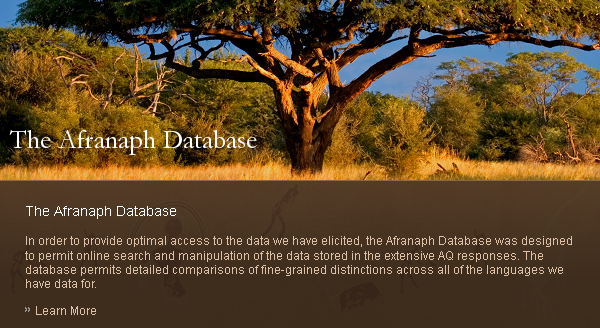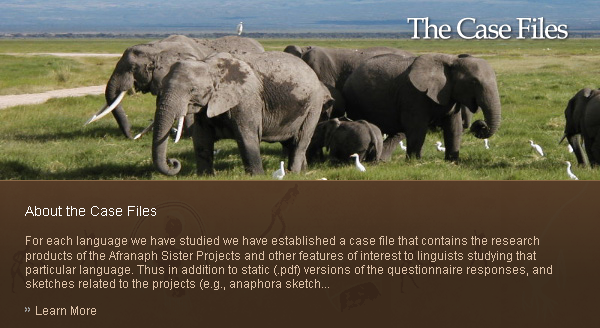- Last Updated on Wednesday, 19 March 2014 09:42
Enhanced Search
If you are comfortable conducting simple searches but you find you need a more precise tool, then it is time to invest a little time in mastering the Enhanced Search options. These options include searching for pre-sorted properties assigned to the three types of entities, languages, sentences and anaphoric markers. All of the specifications permitted by Simple Search are also present for enhanced searches, but on top of these all the property specifications are available, including any property specification you may have seen on the Browse page for the language you looked at, and many other sentence properties besides.
First a word about the property specifications - They are only as consistent as the protocol under which they were entered and the standardized usage of those who assigned these properties according to the protocol. If we determine that the matrix verb sentence of a sentence is a verb of semantic class X, what is our definition of ‘verb of semantic class X?’ for any X? If we say that a marker has a reciprocal or sociative reading, what is our definition of these readings? If we say that a language is ‘consistently SOV’ or ‘split word order SVO-SOV’, how do we assign these values to the languages in question? For every property of these three entities that can be searched, the criteria for the assignment of the feature are to be found listed on the Database Property Attributions page. We try to limit inconsistencies and errors of this kind by keeping our protocols and definitions clear (as we do for the glossing conventions), but since this is a human enterprise, there will be errors.
The best way to get a sense of what can be looked for is to state an objective and then try some Enhanced Search strategies to see how the database can be exploited to meet the objective. Here are three example enhanced searches. (The rest of this section is under construction).






